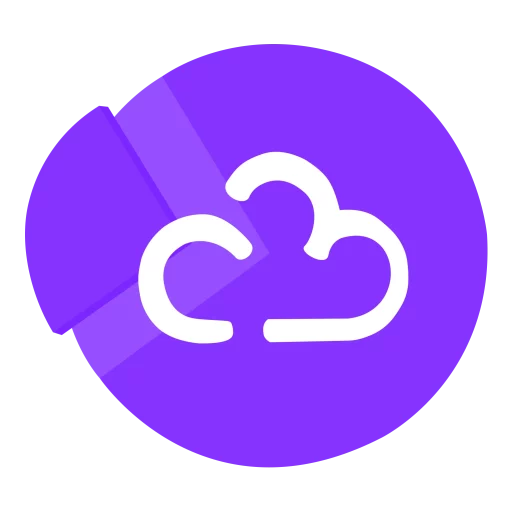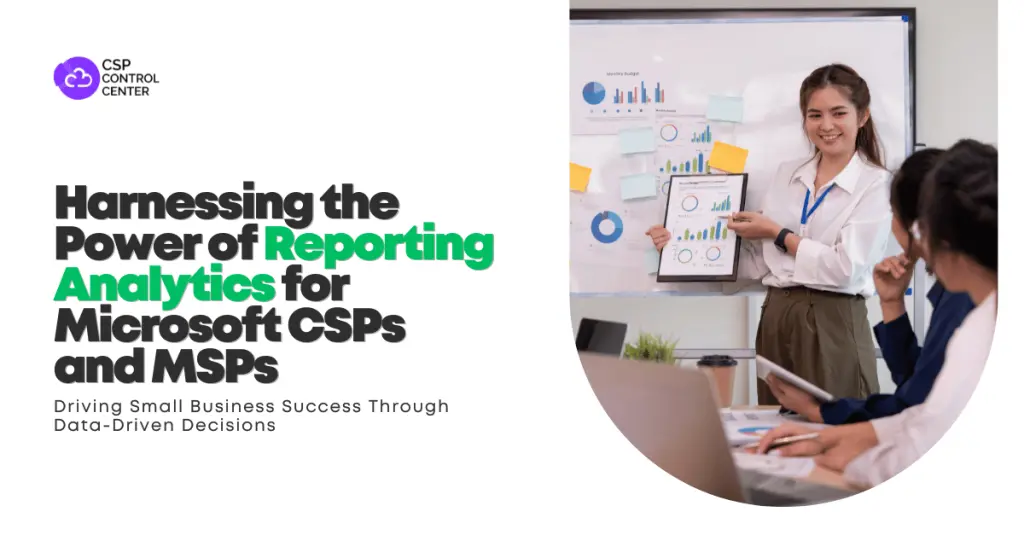Several factors are contributing to the rapid transformation that businesses particularly small businesses are witnessing today. Some of these are increased competition, evolving customer expectations, and the pressure to deliver exceptional service. As more and more businesses rely on digital solutions Microsoft CSPs and MSPs must adapt to drive business growth and stay ahead. This dynamic business landscape presents significant challenges for Microsoft CSP and MSP businesses including customer churn, operational inefficiencies, revenue slowdown, etc. Navigating these complexities requires Microsoft CSPs and MSPs to leverage reporting analytics. Adopting a data-driven approach can unlock hidden opportunities, optimize operations, and drive business growth and profitability.
Challenges Faced by Microsoft CSP and MSP businesses
The Microsoft CSP and MSP businesses face several challenges in a highly competitive and evolving business landscape. Some of the key challenges Microsoft CSPs and MSPs are likely to face include:
Evolving Customer Behavior and Expectations
Customer expectations are continuously evolving which makes it difficult to anticipate and adapt service offerings. Customer demands are on the rise, and they are seeking more complex, personalized, and flexible solutions. Developing highly customized solutions addressing specific business needs can be resource-intensive and complex to manage. Customers are more focused on the business outcomes of the solutions and expect Microsoft CSPs and MSPs to understand their business goals and deliver services that align with these goals. Customers expect proactive support and quick problem resolution from their Microsoft CSP and MSP partners which puts pressure on the customer support teams.
Technological Advancements
The rapid evolution of technology presents opportunities and challenges for Microsoft CSP and MSP businesses. To stay ahead Microsoft CSPs and MSPs need to heavily invest in training and infrastructure to manage emerging technologies including such as artificial intelligence (AI), machine learning (ML), the Internet of Things (IoT), and advanced cybersecurity solutions. As new technologies emerge, it requires constant learning and adaptation. Attracting and retaining employees with the necessary technical expertise can be challenging.
Differentiating from Competition
The Microsoft CSP and MSP market is saturated with competitors offering similar services as a result the customers have numerous options. Standing out from the competition is vital for attracting and retaining customers. However, developing unique value propositions can be difficult for Microsoft partners. It requires deep industry understanding and involves high associated costs due to significant investment in research and development, marketing, and design. These expenses can make sustained differentiation difficult for small businesses. Moreover, customers might not be attracted to the differentiated service, or their preferences might change over time. Differentiating also creates additional regulatory and compliance challenges as it often involves incorporating new technologies and approaches. Ensuring that differentiated services comply with industry standards and regulations can be complex and time-consuming.
Operational Efficiency
Delivering high-quality services requires Microsoft CSPs and MSPs to maintain operational efficiency. Managing a large customer base with multiple subscriptions and varied billing cycles, pricing, and payment terms can impact business efficiency. Clear visibility across multiple customer accounts, keeping those accounts updated, and managing timely renewals and payments can be challenging. Inconsistencies or inaccuracies in billing can lead to revenue leakages, delayed payments, and erosion of customer trust. As the Microsoft CSP and MSP business grows, scaling operations efficiently without compromising service quality becomes increasingly difficult.
Profitability and Pricing
Maintaining profitability in a highly competitive market can be quite challenging. Competitive pressure leads to many Microsoft CSP and MSP businesses lowering prices and undervaluing their services. The artificially low pricing hurts profit margins and makes it difficult to do a price correction during subscription renewals. Setting the correct price for different products and services can be tricky for Microsoft CSPs and MSPs in the absence of relevant data points.
Importance of Reporting Analytics for Microsoft CSP and MSP Success
One of the critical tools that can help Microsoft CSPs and MSPs deliver exceptional value and sustain success is robust reporting analytics. Reporting analytics is not just limited to collecting data, but transforming it into actionable insights that can enhance customer satisfaction, identify business opportunities, drive strategic decisions, optimize operations, etc. Let us have a look at why reporting analytics is vital for Microsoft CSP and MSP success:
Enhancing Customer Experience
Customer satisfaction is important for thriving in a highly competitive environment. With reporting analytics Microsoft CSPs and MSPs can gain deep insights into customer behavior, preferences, and business pain points. Predictive analysis can help forecast customer needs allowing Microsoft CSPs and MSPs to offer personalized solutions. Additionally, Microsoft CSP and MSP businesses can use analytics to identify trends in customer support queries. This helps in proactively addressing potential issues through better training and resources. These improve the overall customer experience, foster loyalty, and reduce churn.
Improving Operational Efficiency
Operational efficiency impacts business growth and profitability. Reporting analytics can be used to identify and address operational inefficiencies. By analyzing different sets of data, Microsoft CSP and MSP businesses can gain insights needed to streamline processes, enhance productivity, and optimize resource allocation. Analytics can identify bottlenecks and inefficiencies in the service delivery processes allowing Microsoft partners to implement process improvements. Analytics can also help in forecasting demand and ensuring that the necessary resources are available to manage the expected workload this avoids overstaffing or understaffing problems.
Strengthening Financial Management
Effective financial management is vital for growing and sustaining a business. Reporting analytics provides Microsoft CSP and MSP businesses with insights into their financial performance. These insights can help in identifying areas where costs can be reduced or optimized, such as licensing, staffing, hardware, and software costs. Analytics can also identify high-margin products and services leading to revenue maximization. Data can also be used to measure business performance by tracking and analyzing key financial metrics like gross margin, operating profit, and return on investment (ROI). According to a survey by McKinsey & Company, “Companies making intensive use of customer analytics are 2.6 times more likely to have a significantly higher ROI than competitors.” The relevant financial data can enable better budgeting, forecasting, and financial planning. Data-driven decision-making can enhance financial health and support long-term growth.
Optimizing Sales and Marketing
Data-driven decision-making can improve sales and marketing efforts. Microsoft CSPs and MSPs can analyze customer data and market trends to refine their sales and marketing strategies. Customer demographics and buying behavior can help identify and segment the ideal customer base allowing the tailoring of marketing messages to resonate with the target audience. Evaluating the performance of past and current marketing campaigns can reveal which tactics are most effective and can help optimize marketing spending increasing the ROI of marketing campaigns. Sales data can help identify high-potential leads and optimize sales processes. Prioritizing easy-to-close leads coupled with robust sales processes can shorten the sales cycle leading to regular cash flow and higher sales. Click here to learn more about building technical and sales capability as a Microsoft CSP.
Driving Growth and Profitability
Achieving business growth and profitability is the ultimate goal of Microsoft CSP and MSP business. Reporting analytics is a powerful tool that can be used to identify new business opportunities including untapped market segments, unmet customer needs, and new product or service opportunities. Analytics can also help measure business performance and support strategic decision-making. Microsoft CSPs and MSPs can use predictive modeling to forecast the outcomes of expanding into new markets or launching new solutions. This can help them make informed decisions and drive business growth.
Implementing Reporting Analytics in Microsoft CSPs and MSPs
Implementing reporting analytics in Microsoft CSP and MSP business requires following a structured approach. It involves a series of strategic steps that can transform data into actionable insights. Let’s have a look at the different steps of this comprehensive and methodical approach:
Conducting a Needs Assessment
The first step is to have a thorough understanding of the business by conducting a comprehensive needs assessment. It starts by identifying business goals and defining what Microsoft CSPs and MSPs want to achieve with reporting analytics. Are they looking to enhance customer satisfaction, improve profitability, address operational inefficiencies, or support sales and marketing efforts? Collaboration with key stakeholders across different business functions including IT, finance, operations, etc. is required to understand the data requirements and pain points. After this, key performance indicators (KPIs) that align with the business objectives need to be identified, these can include customer retention rates, service uptime, revenue growth, customer lifetime value (CLTV), and operational costs. There is also a need to evaluate the existing data infrastructure and reporting processes and identify gaps and areas for improvement.
Selecting the Right Tools and Technologies
Choosing the correct tools and technologies is vital for effective reporting analytics. Microsoft offers several solutions that can be used together to provide comprehensive data visualization and analysis capabilities. Some popular tools are Microsoft Power BI, which can be used to visualize data and share insights across the organization, and Azure Synapse Analytics, which can accelerate time to insight across data warehouses and big data systems. The choice of tools should depend upon the volume and complexity of the data sets, reporting requirements, and the skill sets of the users. Apart from specific reporting analytics tools, Microsoft CSP billing automation tools can be leveraged to enhance reporting and analytics. These tools automate the entire billing process which reduces manual errors and ensures reliable data for analysis. The real-time billing information can be integrated into reporting analytics for accurate financial analysis.
Collecting and Integrating Data
Data is the driving force behind analytics and both internal and external data need to be collected and integrated to gain useful insights. For Microsoft CSPs and MSPs, data might be stored in different internal systems such as ERP systems, CRM platforms, billing tools, and other business applications. The internal data from these systems as well as external data such as market trends, customer feedback, etc. should be consolidated and harmonized. Data integration tools can be used to streamline this process. Data quality checks need to be implemented at various stages of the data integration process to ensure the quality, completeness, and consistency of the data.
Implementing Data Security and Governance
The sensitive customer data should be safeguarded, and the system should comply with the regulatory requirements. Implementing robust data security measures helps safeguard data integrity and privacy. These include encryption, access controls, and regular security audits. Apart from this, data governance policies should be established that define data ownership, quality standards, and usage guidelines to ensure responsible data management. These policies should be regularly reviewed to address emerging threats and changes in regulations.
Training and Empowering Staff
Reporting analytics can give the desired outcome only if the staff is able to utilize the insights generated. It is critical to train staff to use reporting tools and interpret data insights. These include: Conducting comprehensive training sessions on how to use the tools, organizing workshops where employees can practice analyzing data and identifying trends, and providing ongoing support along with regular refresher courses. These steps can help employees become proficient in utilizing the analytics system. Encouraging a culture of data-driven decision-making and involving the employees in this process can demonstrate how analytics can solve real business problems and improve performance. By prioritizing employee training, Microsoft CSP and MSP businesses can ensure that they get the maximum benefit from their investment in reporting analytics
Continuous Improvement and Optimization
Implementing reporting analytics is not a one-time project but an ongoing process that requires continuous improvement and optimization. The analytics strategy should be regularly reviewed and updated so that it remains aligned with business goals. Microsoft CSP and MSP businesses must collect user feedback and continuously monitor the performance of the analytics system. Staying updated with the latest tools and technologies in reporting analytics will enable leveraging new features and capabilities to maintain a competitive edge.
Harness the Power of Reporting Analytics with C3
CSP Control Center or C3 can significantly enhance reporting analytics and facilitate data-driven decision-making for Microsoft CSP and MSP businesses. Here is how C3 can help:
- Automated Billing– eliminates manual billing processes and reduces the risk of inaccuracies in the analytics data
- Real-Time Data Access– provides access to real-time billing and usage data which is essential for accurate and up-to-date reporting.
- Subscription Management– manages customer subscriptions, providing detailed insights into subscription lifecycle and revenue trends.
- Extensive Reporting– provides extensive reporting for both Azure Usage and license purchases. It also provides Power BI reporting over Azure on demand.
- Business Analytics– offers powerful business analytics capabilities such as customer analytics to understand customer behavior and analyzing revenue based on customer usage patterns and product types.
Get in touch to learn more about how C3 can help make data-driven decisions, improve customer satisfaction, and enhance the operational efficiency of Microsoft CSP and MSP business.

 CSP Control Center
CSP Control Center
 CloudEvents
CloudEvents


